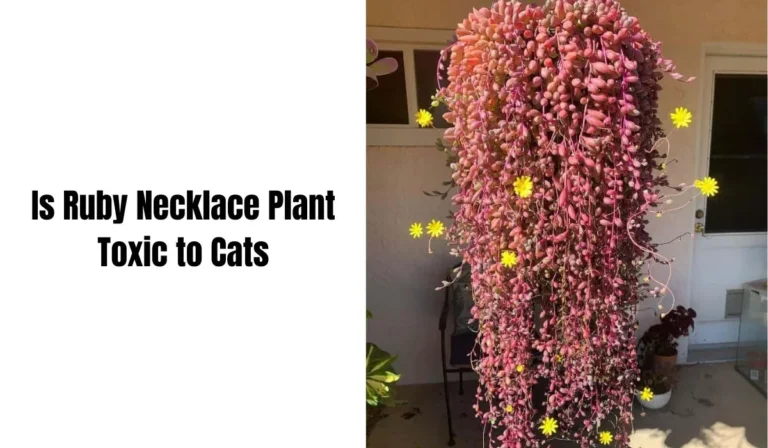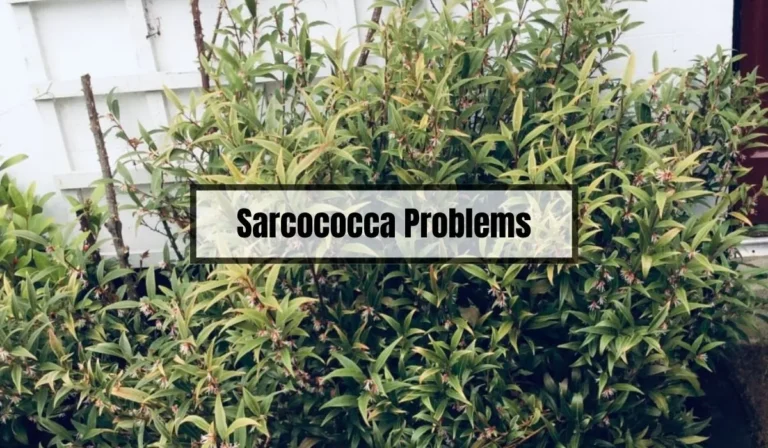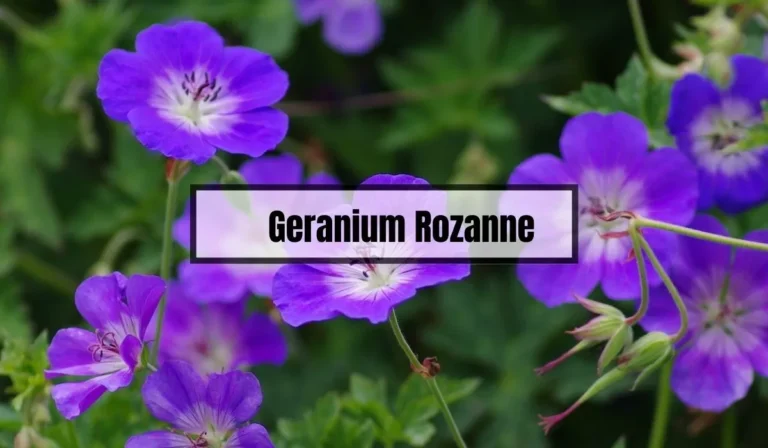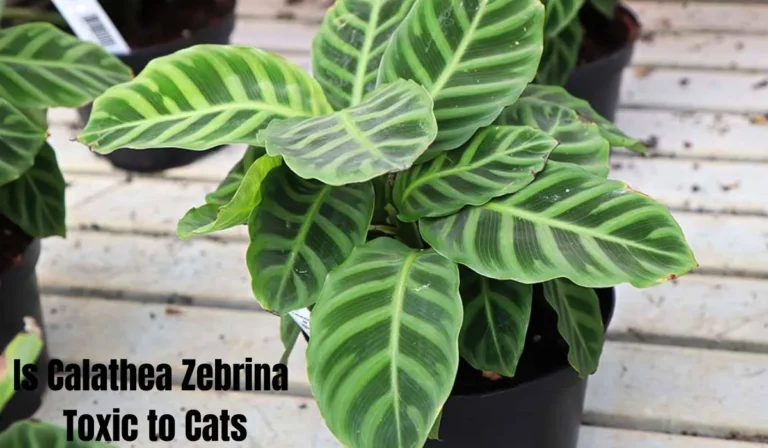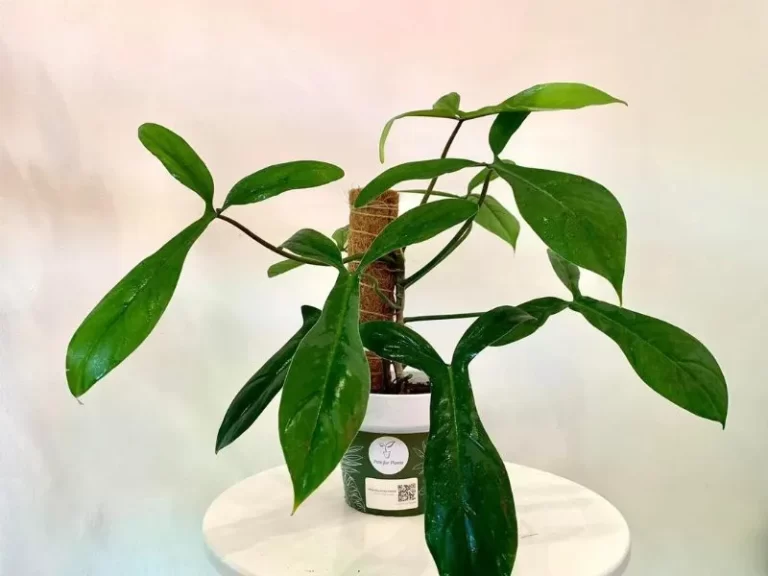Philodendron Selloum Leaves Curling: Causes and Solutions
If you’re noticing your Philodendron Selloum leaves curling, it could be a sign of stress. Curling leaves are a common symptom of several issues, including overwatering, underwatering, low humidity, and direct sunlight.
Understanding the causes of curling leaves and how to fix them can help you keep your Philodendron Selloum healthy and thriving.

Proper watering techniques are crucial for preventing curling leaves. Overwatering can lead to root rot, while underwatering can cause the plant to wilt and curl. It’s best to water your Philodendron Selloum when the top inch of soil feels dry to the touch. You should also make sure your plant is in a well-draining pot to prevent water from sitting in the soil and causing root rot.
Ideal lighting and temperature conditions are also important for preventing curling leaves. Philodendron Selloum plants prefer bright, indirect light and temperatures between 65-80°F.
If your plant is getting too much direct sunlight or is in a room that’s too cold, it can cause the leaves to curl. By providing your plant with the right lighting and temperature conditions, you can help prevent curling leaves and keep your Philodendron Selloum healthy.
Key Takeaways
- Proper watering techniques are crucial for preventing curling leaves.
- Ideal lighting and temperature conditions are important for preventing curling leaves.
- Regular preventive care and maintenance can help keep your Philodendron Selloum healthy.
Understanding Philodendron Selloum Leaves Curling

If you’re experiencing curled leaves on your Philodendron Selloum, you might be wondering what’s causing it. In this section, we’ll explore the common causes of curling leaves, environmental stress factors, and pests and diseases that can affect your plant.
Common Causes of Curling Leaves
There are a few common causes of curling leaves in Philodendron Selloum. One of the most common is improper watering. Overwatering can lead to root rot, which can cause the leaves to curl and turn yellow. Underwatering can also cause the leaves to curl as the plant tries to conserve moisture.
Another common cause of curling leaves is temperature stress. Philodendron Selloum prefers warm temperatures between 65°F and 80°F. If the temperature drops below 60°F, the leaves may curl and turn yellow.
Environmental Stress Factors
Environmental stress factors can also cause curling leaves in Philodendron Selloum. Low humidity levels can cause the leaves to curl and turn brown around the edges. You can increase humidity levels by misting the leaves or placing a humidifier near the plant.
Poor lighting can also cause curling leaves. Philodendron Selloum prefers bright, indirect light. If the plant is not getting enough light, the leaves may curl and turn yellow.
Pests and Diseases
Pests and diseases can also cause curling leaves in Philodendron Selloum. Spider mites, mealybugs, and scale insects can all infest the plant and cause the leaves to curl. Fungal infections can also cause curling leaves, as well as spots and discoloration.
If you suspect that your Philodendron Selloum has a pest or disease problem, isolate the plant from other plants and treat it immediately. You can use insecticidal soap or neem oil to treat pests, and a fungicide to treat fungal infections.
Remember to regularly inspect your Philodendron Selloum for signs of curling leaves, and address any issues promptly to keep your plant healthy and thriving.
Proper Watering Techniques

Proper watering techniques are crucial to prevent philodendron selloum leaves from curling. In this section, we will discuss how to identify underwatering and overwatering and best watering practices.
Identifying Underwatering
Underwatering is one of the most common causes of philodendron selloum leaves curling. Signs of underwatering include dry soil, droopy leaves, and crispy edges. To prevent underwatering, make sure to water your plant when the top 1-2 inches of soil feel dry.
Identifying Overwatering
Overwatering can also cause philodendron selloum leaves to curl. Signs of overwatering include yellowing leaves, mushy stems, and a foul odor.
To prevent overwatering, make sure to use soil with good drainage and avoid watering your plant too frequently.
Best Watering Practices
To keep your philodendron selloum healthy and prevent leaves from curling, follow these best watering practices:
- Water your plant when the top 1-2 inches of soil feel dry.
- Use soil with good drainage to prevent root rot.
- Avoid overwatering by only watering when necessary.
- Use room temperature water to prevent shock to the roots.
- Water the soil directly instead of the leaves to prevent fungal growth.
By following these proper watering techniques, you can keep your philodendron selloum healthy and prevent leaves from curling.
Ideal Lighting and Temperature Conditions
Lighting Requirements
Philodendron Selloum prefers bright, indirect sunlight for 4-6 hours every day. It can also tolerate low light conditions or deep shade for a while, but it will not thrive in such conditions.
Direct sunlight can scorch the leaves, so it is best to avoid placing the plant in direct sunlight. If you notice that the leaves are curling, it may be due to improper lighting. Consider moving the plant to an area with brighter and indirect sunlight.
Temperature Ranges for Optimal Growth
Philodendron Selloum prefers temperatures between 60-75 degrees Fahrenheit. It can tolerate temperatures as low as 50 degrees Fahrenheit but may suffer if the temperature drops below 50 degrees. If the temperature is too low, the leaves may curl, and the plant may stop growing. On the other hand, if the temperature is too high, the plant may wilt, and the leaves may turn yellow.
Maintaining a consistent temperature is essential for optimal growth. Avoid placing the plant near drafts or heating vents, as sudden temperature changes can stress the plant. If you notice that the leaves are curling, check the temperature and adjust it accordingly.
In summary, providing ideal lighting and temperature conditions is crucial for the healthy growth of Philodendron Selloum. Make sure to provide bright, indirect sunlight for a few hours every day and maintain a consistent temperature between 60-75 degrees Fahrenheit.
Nutrition and Soil Composition
Fertilizing Your Philodendron Selloum
To keep your Philodendron Selloum healthy and prevent its leaves from curling, you need to make sure it receives the proper nutrients. Fertilizing your plant is a crucial part of its care regimen. Use a balanced, water-soluble fertilizer with equal amounts of nitrogen, phosphorus, and potassium.
You can apply it once a month during the growing season, which is from spring to fall. However, it’s important to avoid over-fertilizing your plant, as it can lead to salt buildup and cause leaf burn.
Soil Mixtures and pH Levels
The soil composition also plays a vital role in the health of your Philodendron Selloum. The plant prefers well-draining soil that’s rich in organic matter. A good soil mixture for this plant is one part peat moss, one part perlite, and one part coarse sand.
The pH level of the soil should be slightly acidic, between 5.5 and 6.5. You can use a pH testing kit to check the acidity of your soil. If the pH level is too high, you can add sulfur to lower it, and if it’s too low, you can add lime to raise it.
Remember to repot your Philodendron Selloum every two to three years to ensure it has fresh soil and enough space to grow. When repotting, gently loosen the roots and trim any that are damaged or dead. Place the plant in a new pot with fresh soil, and water it thoroughly. With proper nutrition and soil composition, your Philodendron Selloum will thrive and its leaves will stay healthy and vibrant.
Preventive Care and Maintenance
Taking good care of your Philodendron Selloum is key to preventing leaves from curling. Here are some tips on how to maintain your plant’s health:
Routine Leaf Maintenance
Regularly inspect your plant for any signs of stress. If you notice any leaves curling or yellowing, remove them promptly to prevent the issue from spreading. Use a clean, sharp pair of scissors or pruning shears to make a clean cut.
Keep your plant’s leaves clean by wiping them down with a damp cloth or using a gentle spray of water to remove any dust or debris. This will help your plant absorb sunlight and nutrients more efficiently.
Seasonal Care Tips
During the growing season, your Philodendron Selloum will benefit from a balanced fertilizer every two to three weeks. Be sure to follow the manufacturer’s instructions and avoid over-fertilizing, as this can lead to leaf curling and other issues.
In the winter months, reduce watering and fertilizing to allow your plant to rest. Keep your plant away from cold drafts and ensure it receives enough light to prevent stress.
When to Consult a Specialist
If you notice persistent leaf curling despite your best efforts, it may be time to consult a specialist. A professional can help diagnose any underlying issues and provide targeted solutions to restore your plant’s health.
Remember, taking good care of your Philodendron Selloum is key to preventing leaf curling. With a little routine maintenance and seasonal care, your plant will thrive and provide you with years of enjoyment.
Frequently Asked Questions
What causes the leaves of my Philodendron Selloum to curl and turn yellow?
Curled and yellowing leaves on your Philodendron Selloum could be caused by several factors. Overwatering or underwatering, poor drainage, lack of humidity, or pests are common culprits.
Check the soil moisture level, adjust watering frequency, and ensure proper drainage. Consider placing a humidifier near your plant or misting the leaves. Inspect your plant for pests, such as spider mites or mealybugs, and treat as necessary.
How can I fix curled leaves on my Philodendron after repotting?
Curling leaves after repotting is normal as the plant adjusts to its new environment. However, if the leaves continue to curl, it could indicate overwatering or underwatering.
Check the soil moisture level and adjust watering frequency accordingly. Consider adding a layer of mulch to the soil to retain moisture. Avoid fertilizing your plant for at least a month after repotting.
Why are my Philodendron’s leaves curling and developing brown spots?
Curling and brown spots on Philodendron leaves could be caused by several factors. Overwatering, underwatering, poor drainage, lack of humidity, or pests are common culprits. Check the soil moisture level, adjust watering frequency, and ensure proper drainage.
Consider placing a humidifier near your plant or misting the leaves. Inspect your plant for pests, such as spider mites or mealybugs, and treat as necessary.
Can curled leaves on my Lemon Lime Philodendron be a sign of a specific problem?
Curled leaves on your Lemon Lime Philodendron could indicate a specific problem, such as a lack of nutrients or too much direct sunlight.
Ensure your plant is getting the appropriate amount of light for its species and adjust as necessary. Consider fertilizing your plant with a balanced fertilizer every two to three weeks during the growing season.
What are the best care practices for a Philodendron with curly leaves?
The best care practices for a Philodendron with curly leaves include proper watering, well-draining soil, high humidity, and appropriate lighting.
Water your plant when the top inch of soil is dry, and ensure proper drainage. Place a humidifier near your plant or mist the leaves to increase humidity. Provide bright, indirect light for your plant.
How can I encourage my Philodendron Selloum to grow more bushy and full?
To encourage your Philodendron Selloum to grow more bushy and full, consider pruning your plant. Pinch back the tips of the stems to encourage branching. Remove any yellowing or brown leaves to promote new growth.
Fertilize your plant with a balanced fertilizer every two to three weeks during the growing season. Ensure your plant is getting the appropriate amount of light for its species.

